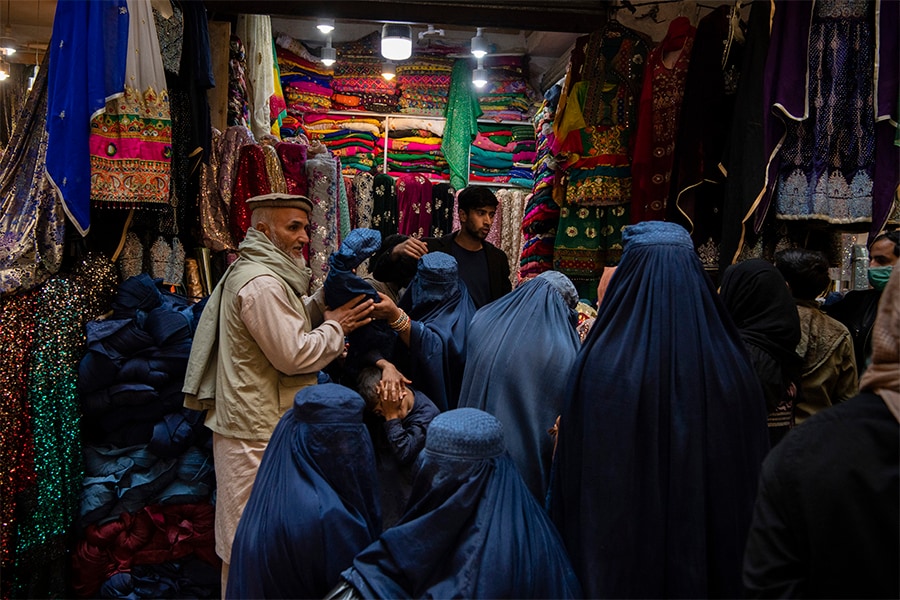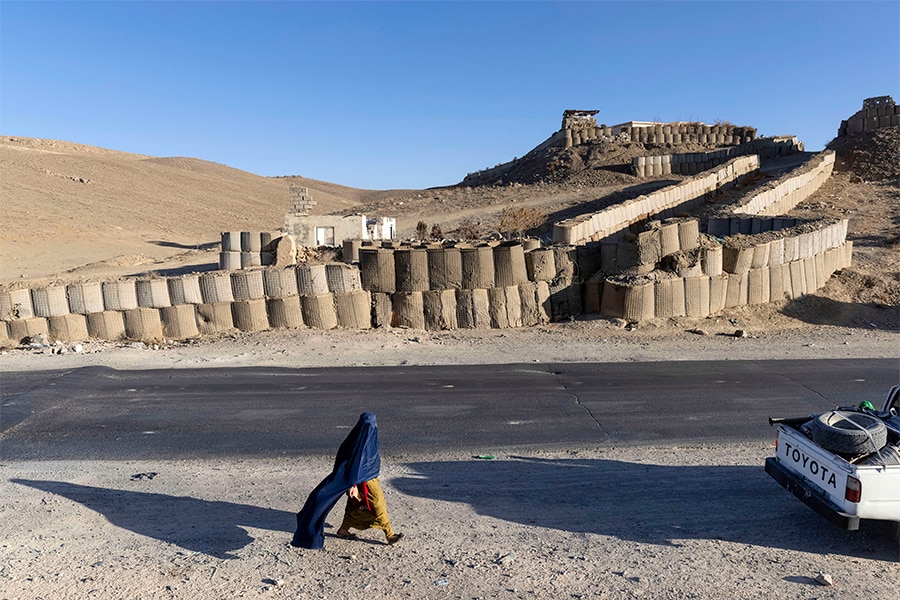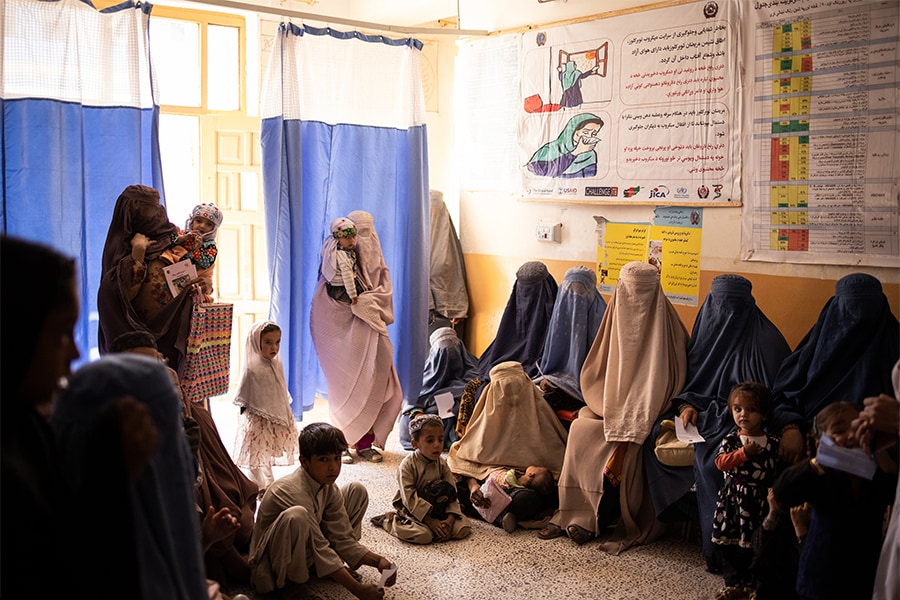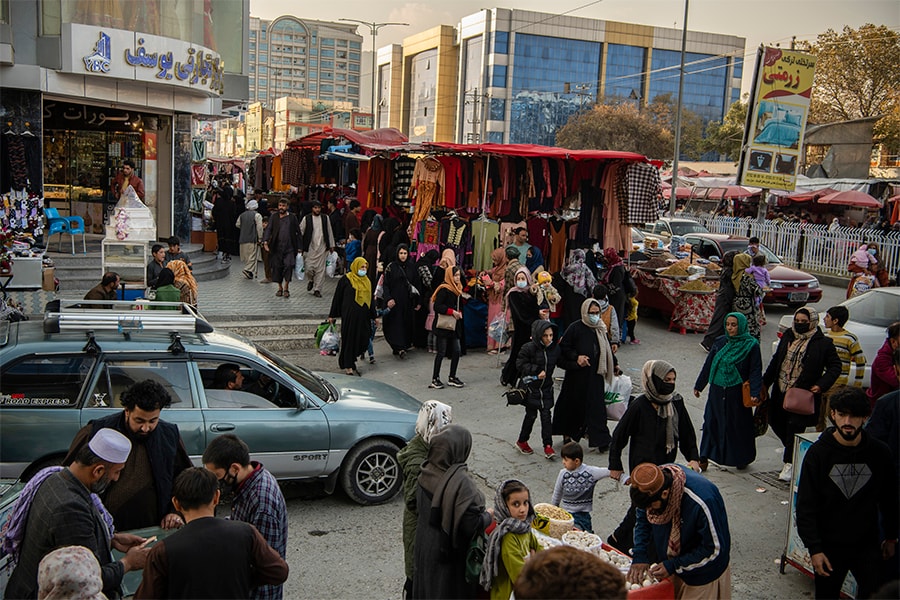
What Eid looked like in a Taliban-run Afghanistan
Now that the war is over, people can travel freely down highways devoid of gunfire, roadside bombs and attempts at extortion. The terrifying drone of warplanes overhead is long gone. But for many, the holiday served as a reminder of the dissonance between the promise of peace many Afghans had imagined and the realities of the end of the war
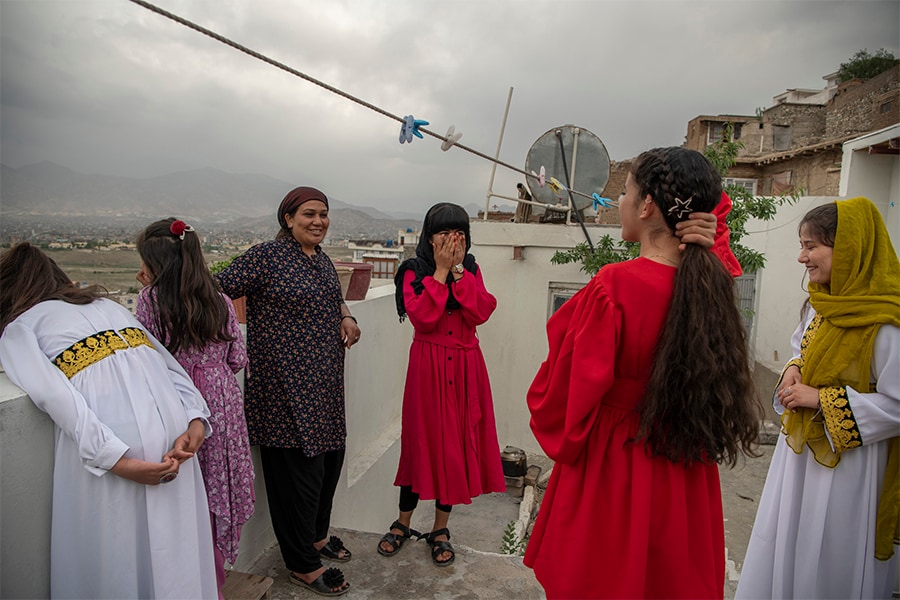 Girls and women at a home during the Eid al-Fitr holiday, in Kabul, Afghanistan, May 2, 2022. The ruling Taliban recently decreed that Afghan women must cover themselves from head to toe, and many girls have not been to school in months. Image: Kiana Hayeri/The New York Times
Girls and women at a home during the Eid al-Fitr holiday, in Kabul, Afghanistan, May 2, 2022. The ruling Taliban recently decreed that Afghan women must cover themselves from head to toe, and many girls have not been to school in months. Image: Kiana Hayeri/The New York Times
KABUL, Afghanistan — Thousands of Afghans had piled into buses and set out down the country’s once-perilous highways bound for relatives they had not seen in years.
Afghanistan’s only national park was filled with tourists who had only dreamed of traveling to its intensely blue lakes and jagged mountains when fighting raged across the country.
And Zulhijjah Mirzadah, a mother of five, packed a small picnic of dried fruit, gathered her family in a minibus and wove for two hours through the congested streets of the capital, Kabul, to a bustling amusement park.
From the entrance, she could hear the low whoosh of a roller coaster and the chorus of joyous screams from Afghans inside celebrating Eid al-Fitr, the holiday marking the end of the holy month of Ramadan. But she could not go further. Women, she was told at the gate, were barred by the Taliban from entering the park on Eid.
“We’re facing economic problems; things are expensive; we can’t find work; our daughters can’t go to school — but we hoped to have a picnic in the park today,” said Mirzadah, 25.
©2019 New York Times News Service


